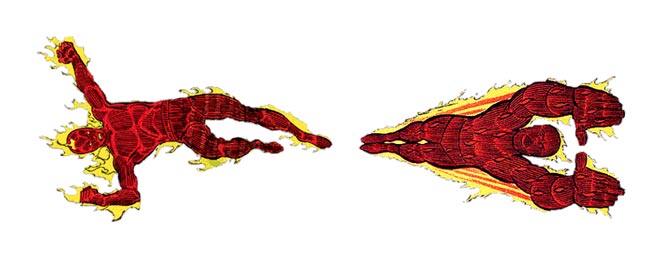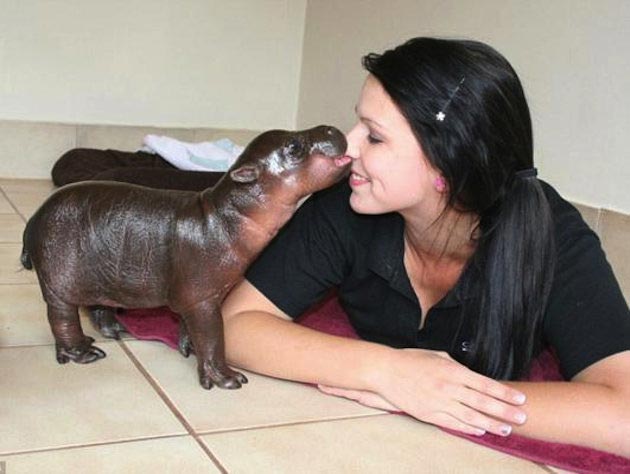
Math can be a fun, logic puzzle for some people. But for others, doing math is a headache-inducing experience. Scientists at the Stanford University School of Medicine have recently shown that people who experience math anxiety may have brains that are wired a little differently from those who don’t, and this difference in brain activity may be what’s making people sweat over equations.
{ APS | Continue reading }
mathematics, psychology |
April 5th, 2012

The Tor Project is a free network run by volunteers that hides users locations and usage from surveillance and traffic analysis. Essentially, it provides online anonymity to anybody who wants it. Tor users can send email and instant message, surf websites and post content online without anyone knowing who or where they are. (…)
It’s no surprise then that the Great Firewall of China, as it is called, actively blocks access to the Tor network. So an interesting question is how this censorship works and how it might be circumvented.
Today, Philipp Winter and Stefan Lindskog at Karlstad University in Sweden provide an answer.
{ The Physics arXiv Blog | Continue reading }
Anonymous has hacked hundreds of Chinese government websites. Some sites were just defaced, but others have had administrator accounts, phone numbers, and e-mail addresses leaked.
{ ZDNet | Continue reading }
asia, technology |
April 5th, 2012

Imagine that you have a big box of sand in which you bury a tiny model of a footstool. A few seconds later, you reach into the box and pull out a full-size footstool: The sand has assembled itself into a large-scale replica of the model.
That may sound like a scene from a Harry Potter novel, but it’s the vision animating a research project at the Distributed Robotics Laboratory (DRL) at MIT’s Computer Science and Artificial Intelligence Laboratory.
At the IEEE International Conference on Robotics and Automation in May — the world’s premier robotics conference — DRL researchers will present a paper describing algorithms that could enable such “smart sand.”
{ MIT News | Continue reading }
science, technology |
April 4th, 2012

A variety of studies suggest that 10% of the world population is left-handed. (…)
In his book Right-Hand, Left-Hand, Chris McManus of University College London argues that the proportion of left-handers is increasing and left-handed people as a group have historically produced an above-average quota of high achievers. He says that left-handers’ brains are structured differently in a way that increases their range of abilities, and the genes that determine left-handedness also govern development of the language centres of the brain.
In a 2006 U.S. study, researchers from Lafayette College and Johns Hopkins University concluded that there was no scientifically significant correlation between handedness and earnings for the general population, but among college-educated people, left-handers earned 10 to 15 % more than their right-handed counterparts.
{ Wikipedia | Continue reading }
illustration { Sauer Kids }
science |
April 4th, 2012

Six studies demonstrate the “pot calling the kettle black” phenomenon whereby people are guilty of the very fault they identify in others. Recalling an undeniable ethical failure, people experience ethical dissonance between their moral values and their behavioral misconduct. Our findings indicate that to reduce ethical dissonance, individuals use a double-distancing mechanism. Using an overcompensating ethical code, they judge others more harshly and present themselves as more virtuous and ethical.
{ Journal of Experimental Psychology: General | PDF | via Overcoming Bias }
related { Psychological projection is a psychological defense mechanism where a person subconsciously denies his or her own attributes, thoughts, and emotions, which are then ascribed to the outside world, usually to other people. | Wikipedia }
ideas, psychology, shit talkers |
April 3rd, 2012

Computer scientists have analysed thousands of memorable movie quotes to work out why we remember certain phrases and not others. (…)
They then asked individuals who had not seen the films to guess which of the two lines was the memorable one. On average, people chose correctly about 75 per cent of the time, confirming the idea that the memorable features are inherent in the lines themselves and not the result of some other factor, such as the length of the lines or their location in the film. (…)
They then compared the memorable phrases with a standard corpus of common language phrases taken from 1967, making it unlikely to contain phrases from modern films. (…)
The phrases themselves turn out to be significantly distinctive, meaning they’re made up of combinations of words that are unlikely to appear in the corpus. By contrast, memorable phrases tend to use very ordinary grammatical structures that are highly likely to turn up in the corpus.
{ The Physics arXiv Blog | Continue reading }
Linguistics, showbiz |
April 3rd, 2012

One quick story: I was a venture capitalist in 2001. A company, Oingo, which later became Applied Semantics, had a technique for how search engines could make money by having people bid for ads. My partner at the firm said, “we can probably pick up half this company for cheap. They are running out of money.” It was during the Internet bust.
“Are you kidding me, “ I said. “they are in the search engine business. That’s totally dead.” And I went back to playing the Defender machine that was in my office. That I would play all day long even while companies waited in the conference room.
A year later they were bought by Google for 1% of Google. Our half would’ve now been worth hundreds of millions if we had invested. I was the worst venture capitalist ever. They had changed their name from Oingo to Applied Semantics to what became within Google…AdWords and AdSense, which has been 97% of Google’s revenues since 2001. 97%. $67 billion dollars. (…)
Ken Lang buys his patents back from Lycos for almost nothing. He starts a company: I/P Engine. Two weeks ago he announced he was merging his company with a public company, Vringo (Nasdaq: VRNG). Because it’s Ken, I buy the stock although will buy more after this article is out and readers read this.
The company sues Google for a big percentage of those $67 billion in revenues plus future revenues. The claim: Google has willfully infringed on Vringo – I/P’s patents for sorting ads based on click-throughs.
{ James Altucher/TechCrunch | Continue reading }
economics, google, law |
April 3rd, 2012

Computers dominate how we live, work and think. For some, the technology is a boon and promises even better things to come. But others warn that there could be bizarre consequences and that humans may be on the losing end of progress. (…)
“Economic progress ultimately signifies the ability to produce things at a lower financial cost and with less labor than in the past,” says Polish sociologist Zygmunt Bauman. As a result, he says, increasing effectiveness goes hand in hand with rising unemployment, and the unemployed merely become “human waste.”
Likewise, (…) Erik Brynjolfsson and Andrew McAfee, both scholars at the MIT, argue that, for the first time in its history, technological progress is creating more jobs for computers than for people.
{ Spiegel | Continue reading }
unrelated { Competition among memes in a world with limited attention }
economics, ideas, technology, uh oh |
April 3rd, 2012

{ The primate lab is home to 10 “shockingly smart” brown Capuchin monkeys trained to trade tokens for food. Researchers wondered whether monkeys, like humans, desire an expensive item more. | WSJ | full story }
animals, economics, science |
April 3rd, 2012
animals, cuties |
April 3rd, 2012

Some of the memories that stick with me from that era:
—Our top account executive was sleeping with a creative director, a copywriter (not me), an account supervisor, and, I believe, the married CEO of the firm, all at the same time. She later became president of the agency.
—After 5pm, said CEO would walk around the office rambling about “big ideas” while smoking a fat joint laced with cocaine and who knows what else. (He’s been dead for five years). Often accompanying him on the tours was his best friend, a boxer/mob hitman with hair plugs, who casually told us about his kills.
—Our New Business guy, not the sharpest X-Acto knife in the drawer, got us in a lot of doors. He then died of a cocaine overdose in the CEO’s pied-à-terre fuckpad.
{ Copyranter/Buzzfeed | Continue reading }
artwork { David Mann }
experience, flashback, marketing, new york |
April 3rd, 2012

New findings at the Wonderwerk Cave, in South Africa, suggest that early humans started using fire 1 million years ago, approximately 300,000 years earlier than previously thought.
{ United Academics | Continue reading }
fire, flashback, science |
April 3rd, 2012

A birthing woman’s average labor time was barely four hours. These days, labor is a six and a half-hour marathon, at least according to a new federal study that compared almost 140,000 births from two different time periods. (…)
While the exact causes of longer labor times are unclear, the study suggests a few contributing factors, such as differences in today’s mothers from the mothers of yesteryear, namely that first-time mothers today are four years older on average, boast higher body masses, and are a more racially diverse group than their 50s-era predecessors. Babies are also bigger today, with the average newborn being 4-ounces heavier at birth than it would have been in 1960.
{ Jezebel | Continue reading }
photo { Erwin Olaf }
health, kids |
April 3rd, 2012
guide, photogs, psychology |
April 2nd, 2012



{ Ursus Wehrli | more }
supercalifragilisticexpialidocious { The Oxford English Dictionary says there was an earlier form of the word, supercalafajalistickespialadojus, first documented in a song in 1949. The song’s writers were unsuccessful in taking legal action for alleged copyright infringement against the company that published the Disney song. | BBC | Continue reading }
visual design |
April 2nd, 2012

After my hopes of having sex with my lesbian friends were dashed, there was a lot of talk about how exactly I would catch and transport my sperm to them for insemination. (…)
It’s four in the morning and I’m sitting in front of my computer trying to jerk off into a disposable plastic container.
{ Davis Williams/Hippocampus Magazine | Continue reading }
photo { Réka Ebergényi by Eric Fischer }
experience, sex-oriented |
April 2nd, 2012

Sometime last year computers at the U.S. Social Security Administration were hacked and the identities of millions of Americans were compromised. What, you didn’t hear about that? Nobody did.
The extent of damage is only just now coming to light in the form of millions of false 2011 income tax returns filed in the names of people currently receiving Social Security benefits.
{ Robert X. Cringely | Continue reading }
U.S., economics, scams and heists, technology |
April 2nd, 2012

The Milky Way and Andromeda are siblings, … we used to think they were near-twins. .. [But] the black hole at [Andromeda’s] heart is more than a hundred times as massive as ours. And while our galaxy is strewn with about 150 of the bright galactic baubles known as globular clusters, Andromeda boasts more than 400. … Whereas Andromeda is a pretty well-adjusted spiral, the Milky Way is an oddball – dimmer and quieter than all but a few per cent of its peers. That is probably because typical spirals such as Andromeda are transformed by collisions with other galaxies over their lifetimes. …
The Milky Way must have lived relatively undisturbed. Except for encounters with a few little galaxies such as the Sagittarius dwarf, which the Milky Way is slowly devouring, we wouldn’t have seen much action for 10 billion years. Perhaps that is why we are here to note the difference. More disturbed spirals would have suffered more supernova explosions and other upheavals, possibly making the Milky Way’s rare serenity especially hospitable for complex life.
{ NewScientist | via Overcoming Bias }
space |
April 2nd, 2012

{ Only 500 people have been to space, only three people have been to the bottom of the ocean, but no one has ever attempted to journey to the core of an active volcano. Until now. Using patented carbon-carbon materials pioneered for deep space exploration, Virgin is proud to announce a revolutionary new vehicle, VVS1, which will be capable of plunging three people into the molten lava core of an active volcano. | Virgin | Continue reading | Thanks Tim }
elements, technology, transportation |
April 2nd, 2012

Sixty-five million years ago, a Manhattan-size meteorite traveling through space at about 11 kilometers per second punched through the sky before hitting the ground near what is now Mexico’s Yucatán Peninsula. The energy released by the impact poured into the atmosphere, heating Earth’s surface. Then the dust lofted by this impact blocked out the sun, bringing years of wintry conditions everywhere, wiping out many terrestrial species, including the nonfeathered dinosaurs. Birds and mammals thus owe their ascendancy to the intersection of two orbits: that of Earth and that of a devastating visitor from deep space. (…)
In December 2004, scientists at NASA and the Jet Propulsion Laboratory (JPL), in Pasadena, Calif., estimated there was a nearly 3 percent chance that a 30-billion-kilogram rock called 99942 Apophis would slam into Earth in 2029, releasing the energy equivalent of 500 million tons of TNT. That’s enough to level small countries or raise tsunamis that could wash away coastal cities on several continents. More recent calculations have lowered the odds of a 2029 impact to about 1 in 250 000. This time around, Apophis will probably miss us—but only by 30 000 km, less than one-tenth of the distance to the moon. (…)
We considered several strategies. The most dramatic—and the favorite of Hollywood special-effects experts—is the nuclear option. Just load up the rocket with a bunch of thermonuclear bombs, aim carefully, and light the fuse when the spacecraft approaches the target. What could be simpler? The blast would blow off enough material to alter the trajectory of the body, nudging it into an orbit that wouldn’t intersect Earth.
But what if the target is brittle? The object might then fragment, and instead of one large body targeting Earth, there could be several rocks—now highly radioactive—headed our way.
{ IEEE Spectrum | Continue reading }
painting { Nicola Verlato }
incidents, space, technology |
April 2nd, 2012
























